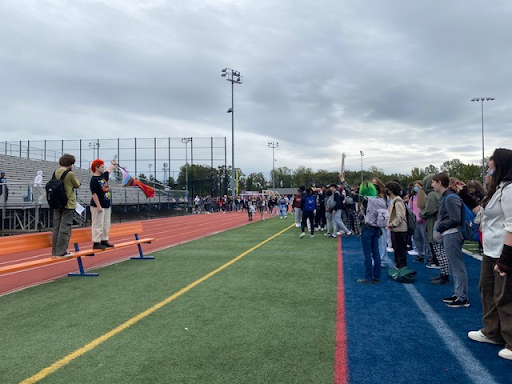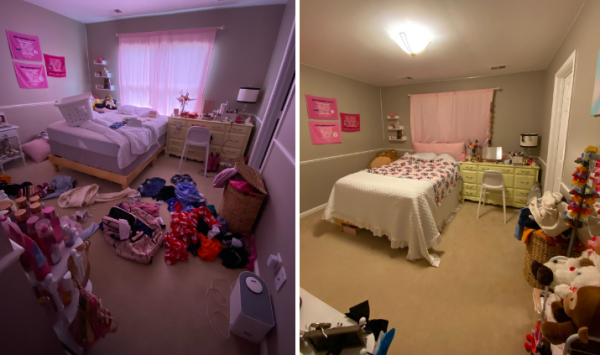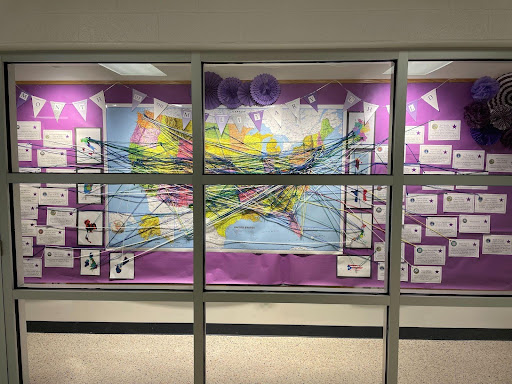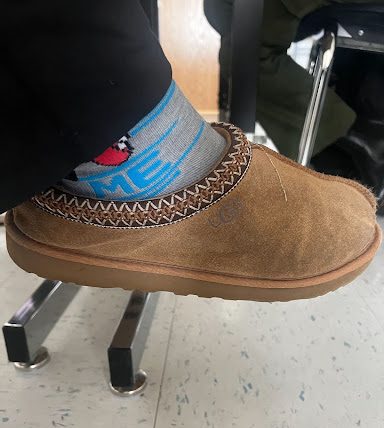Student protest faces resistance

Photo courtesy of Taylor King
Sophomore Mat Hemmer gave a speech in retaliation towards Governor Glenn Youngkin’s new policies regarding transgender students. They spoke about a friend of theirs that was bullied to the point of suicide and discussed the importance of creating a safe environment for LGBTQ+ youth.
Governor Glenn Youngkin’s new policies regarding transgender students quickly sparked several student protests across Northern Virginia. However, WS’s protest faced numerous issues that were largely absent at other schools.
“All it took was for me to post about it, and then I got my friends to repost it,” said sophomore Mat Hemmer. “A friend of mine came in last minute and helped get us a megaphone and got Principal [Michael] Mukai to just be in the area in case something [happened], but my friends and I were the ones in charge.”
As far as Hemmer was aware, the administration had not set any parameters for the walkout. They believed that the walkout was a huge success and reached a large number of students. Hemmer was able to run through their speech and talk about their opinions on Youngkin’s policy with many eager ears in the crowd. Unfortunately, there were some students who were making rude comments and being disrespectful during the speech.
“Someone made a comment about liking ‘chicks with d*cks,’ a group of kids did the Black Lives Matter kneel with their fists up like they were at a BLM rally,” said senior Chase Butia. “Many people were just talking and being disruptive as the speech was being made.”
The protest was held to show transgender students that the school is a safe place for them to express themselves without judgment. The name-calling and mockery defeats this purpose.
“The people who laugh are the same type of people who pushed my friend into suicide. They just prove my point further on why the suicide rates for transgender kids are so high,” said Hemmer.
Many students who genuinely wanted to protest for the right reasons were utterly disgusted by the crude remarks.
“I was so aggravated. I felt like they were just making a joke out of something that is so serious to kids all throughout Virginia and it left the worst taste in my mouth to know that there are people at this school who I probably walk by in the hallways every day that think this is funny. I’m not surprised though, I’m just disappointed,” said Butia.
Some students walked back into the school building right after listening to Hemmer’s speech. Others decided to keep protesting, but they were soon met by the administration.
“Apparently, the admin gave us a 15-minute period to walk out, and then we had to go back inside,” said senior Neena Kirlew. “A lot of people just went back in, but about 10 to 15 of us were really confused because the point of a walkout is to create a disruption so that the admin will have to listen to us, and we can spread the word about Youngkin’s proposal.”
The main goal of a student protest is to garner attention in order to make a change. Imposing strict limitations thus arguably hinders the impact a protest can have and ultimately silences the voices of students.
“About eight of us decided to stay outside, and three of us walked to the government building near the firehouse to get a meeting with Fairfax County Board Supervisor Pat Herrity,” said Kirlew. “We honestly weren’t sure what we were going to get. We really just wanted someone to listen to us about these issues and try and have some influence on the people in our county.”
Alternatively, the walkout at Lake Braddock Secondary School (LB) was entirely student-led with no admin interference, as a walkout should be.
“It did take a lot of work with LB’s principal to make sure we had a safe place to organize. Given that school admin can’t sanction walkouts, it definitely took a lot on the student end to share information via Instagram posts and word of mouth,” said LB senior Jules Lombardi.
WS obviously showed that the walkout was not taken seriously by the administration who created arbitrary rules to limit these students. Student protests should be completely run by students in order to provide an outlet for expression.





